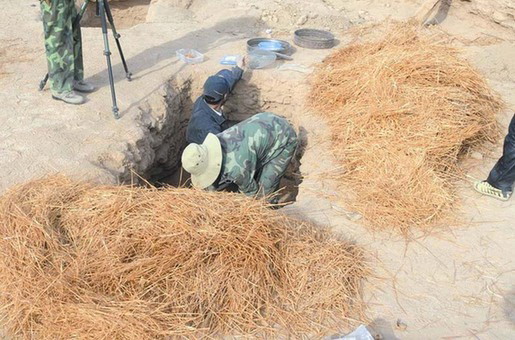 |
|
Wheat plants unearthed from an ancient tomb in Shengjindian, the Xinjiang Uygur autonomous region.Photo provided to chinadaily.com.cn |
Chinese scientists will continue research on wheat from more than 2,000 years ago discovered in an ancient tomb in the Xinjiang Uygur autonomous region in China.
The wheat, around 3,100 plants, was unearthed in a tomb chamber in Shengjindian, Turpan, in 2010, and will be transferred this month from a local research institution in Turpan to the Department of Scientific History and Archaeometry under the Graduate University of the Chinese Academy of Sciences in Beijing.
Along with the wheat, the Shengjindian tomb revealed a large number of relics from 2200-2050 BC, including artificial limbs and wooden ornaments. Through thorough research, scientists hope to learn more about how the nomadic herders living in the region transferred to an agricultural lifestyle. Wheat was introduced to Xinjiang around 4,000 years ago, but how the wheat was planted and processed remains a mystery.
“The preliminary research result shows that the wheat planting technique in the region then was advanced,” said Li Jingjing,a researcher with the archaeometry department in Beijing.
“Compared to today’s wheat, which has 20 to 30 kernels in each plant, every plant of the unearthed wheat has around 10 kernels. For the agricultural techniques of 2,000 years ago, that was a remarkable achievement. “It also suggests the herders then started to spend more time on large-scale planting than hunting, and to learn to use the earliest farming tools,” Li said.






















 Raymond Zhou:
Raymond Zhou: Pauline D Loh:
Pauline D Loh: Hot Pot
Hot Pot Eco China
Eco China China Dream
China Dream China Face
China Face





